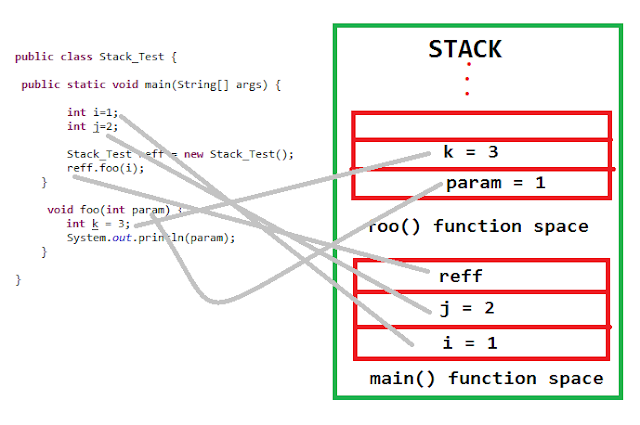Garbage Collection in Java How Java Garbage Collection Works?
Garbage Collection
In Java, the programmers don’t need to take care of destroying the objects that are out of use. The Garbage Collector takes care of it.- Note: All objects are created in Heap Section of memory. More on this in a later tutorial.
- Java garbage collection is the process by which Java programs perform automatic memory management. Java programs compile to bytecode that can be run on a Java Virtual Machine, or JVM for short. When Java programs run on the JVM, objects are created on the heap, which is a portion of memory dedicated to the program. Eventually, some objects will no longer be needed. The garbage collector finds these unused objects and deletes them to free up memory.
How Java
Garbage Collection Works
Java garbage collection is an automatic process. The programmer
does not need to explicitly mark objects to be deleted. The garbage collection
implementation lives in the JVM. Each JVM can implement garbage collection
however it pleases; the only requirement is that it meets the JVM
specification. Although there are many JVMs, Oracle’s HotSpot is by far the
most common. It offers a robust and mature set of garbage collection options.
While HotSpot has multiple garbage collectors that are optimized
for various use cases, all its garbage collectors follow the same basic
process. In the first step, unreferenced objects are identified and marked
as ready for garbage collection. In the second step, marked objects are
deleted. Optionally, memory can be compacted after the garbage collector
deletes objects, so remaining objects are in a contiguous block at the start of
the heap. The compaction process makes it easier to allocate memory to new objects
sequentially after the block of memory allocated to existing objects.
All of HotSpot’s garbage collectors implement a generational
garbage collection strategy that categorizes objects by age. The rationale
behind generational garbage collection is that most objects are short-lived and
will be ready for garbage collection soon after creation.
Benefits of
Java Garbage Collection
The biggest benefit of Java garbage collection is that it
automatically handles the deletion of unused objects or objects that are out
of reach to free up vital memory resources. Programmers working in
languages without garbage collection (like C and C++) must implement manual
memory management in their code.
Despite the extra work required, some programmers argue in favor
of manual memory management over garbage collection, primarily for reasons of control
and performance. While the debate over memory management approaches continues
to rage on, garbage collection is now a standard component of many popular
programming languages. For scenarios in which the garbage collector is
negatively impacting performance, Java offers many options for tuning the
garbage collector to improve its efficiency.




Comments
Post a Comment